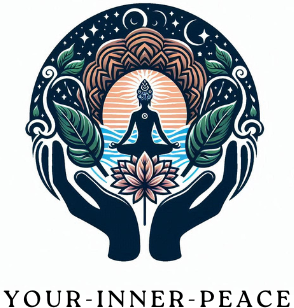Yoga and Mindfulness Integration

Yoga and Mindfulness Integration: A Path to Holistic Well-Being
Understanding the Synergy Between Yoga and Mindfulness
Yoga and mindfulness are often spoken of in the same breath, and for good reason. Both practices aim to cultivate awareness, inner peace, and a balanced state of being. While yoga is primarily known for its physical postures (asanas) and breath control (pranayama), mindfulness is centered on present-moment awareness and non-judgmental acceptance. When combined, they form a powerful synergy that enhances both physical and mental well-being.
Defining Yoga and Mindfulness: Core Principles and Distinctions
Yoga is a multifaceted practice that integrates physical movement, breathwork, and meditation. Rooted in ancient Indian traditions, it aims to unify body, mind, and spirit. Key principles include:
- Asana (physical postures)
- Pranayama (breath control)
- Dhyana (meditation)
- Yamas & Niyamas (ethical guidelines)
Mindfulness, on the other hand, is the practice of cultivating moment-to-moment awareness without judgment. It stems from Buddhist traditions but has been widely embraced in secular settings. Key principles include:
- Present-moment awareness
- Acceptance and non-reactivity
- Compassion and self-kindness
While yoga involves movement, mindfulness is primarily a mental practice—but when blended, they enhance each other in profound ways.
Historical Connections: The Evolution of Yoga and Mindfulness Practices
Yoga has roots in the Vedic texts, dating back thousands of years, evolving through traditions such as Patanjali’s Yoga Sutras. Mindfulness, derived from Buddhist teachings, particularly Vipassana and Zen practices, has been a cornerstone of meditative traditions for centuries. The modern integration of yoga and mindfulness has been influenced by figures such as Thich Nhat Hanh, Jon Kabat-Zinn, and contemporary yoga teachers who emphasize mindful movement.
Scientific Rationale: Evidence Supporting Their Combined Benefits
Studies have shown that integrating yoga and mindfulness can:
- Reduce stress and anxiety (Harvard Medical School, 2020)
- Enhance emotional regulation and cognitive function (Frontiers in Psychology, 2018)
- Improve sleep quality and reduce symptoms of depression (JAMA Psychiatry, 2019)
- Support cardiovascular health and lower inflammation (American Heart Association, 2021)
Therapeutic Effects: How Their Integration Enhances Mental and Physical Well-being
The combination of yoga and mindfulness offers multiple therapeutic benefits:
- Mental Clarity: Mindful yoga practices help quiet the mind and improve focus.
- Emotional Balance: Practicing non-judgmental awareness fosters emotional resilience.
- Physical Flexibility and Strength: Yoga asanas support muscular strength and mobility.
- Stress Reduction: Mindful breathing and movement regulate the nervous system, promoting relaxation.
Common Misconceptions: Addressing Myths About Yoga and Mindfulness
- “You need to be flexible to practice yoga.” Nope! Yoga is about connection, not acrobatics.
- “Mindfulness means stopping your thoughts.” Not at all! It’s about observing them without attachment.
- “Yoga and mindfulness are religious practices.” While they have spiritual roots, they can be practiced secularly by anyone.
- “There’s no science behind these practices.” Countless studies prove their effectiveness in mental and physical health.
Implementing Yoga and Mindfulness in Daily Life
Starting Your Practice: Tips for Beginners and Creating a Sustainable Routine
- Start small: 5–10 minutes of mindful movement or breathwork daily.
- Choose a consistent time and space to cultivate habit-building.
- Listen to your body—modify poses as needed.
- Combine mindfulness with daily activities (e.g., mindful eating, walking, or breathing).
Guided Techniques: Breathing Exercises, Yoga Postures, and Mindful Meditation
- Breathwork: Try diaphragmatic breathing (deep belly breathing) or alternate nostril breathing (Nadi Shodhana).
- Yoga Poses: Begin with gentle postures like Child’s Pose, Cat-Cow, and Downward Dog.
- Meditation: Start with guided mindfulness meditation or body scan techniques.
Integrating Practices: Daily Scenarios and Settings to Incorporate Both
- Morning Routine: Begin the day with a sun salutation and a few minutes of mindful breathing.
- Work Breaks: Take mindful movement breaks, stretch, or practice deep breathing.
- Evening Wind-Down: Engage in a slow yoga flow with a gratitude meditation before bed.
Real-World Benefits: Personal Stories or Testimonials Showcasing Transformation
Many individuals have found life-changing benefits through integrating yoga and mindfulness:
- Sarah, a corporate professional, overcame workplace burnout through daily yoga and mindful breathing.
- Mark, a veteran, used mindfulness-based yoga to manage PTSD symptoms and improve sleep.
- Anna, a mother of three, found peace in mindful movement, reducing stress and enhancing family relationships.
Resource Recommendations: Apps, Books, and Community Classes to Explore
- Apps: Insight Timer, Headspace, Down Dog, Calm
- Books: “The Miracle of Mindfulness” by Thich Nhat Hanh, “The Heart of Yoga” by T.K.V. Desikachar
- Community Classes: Look for local yoga studios, mindfulness workshops, or online platforms like Yoga with Adriene.
Conclusion
The integration of yoga and mindfulness is a holistic approach to wellness that enhances mental clarity, emotional resilience, and physical vitality. By weaving both practices into daily life, anyone can experience profound transformations. Whether you are a seasoned practitioner or a beginner, now is the perfect time to explore this powerful synergy and embark on a journey toward a more mindful and balanced life.







